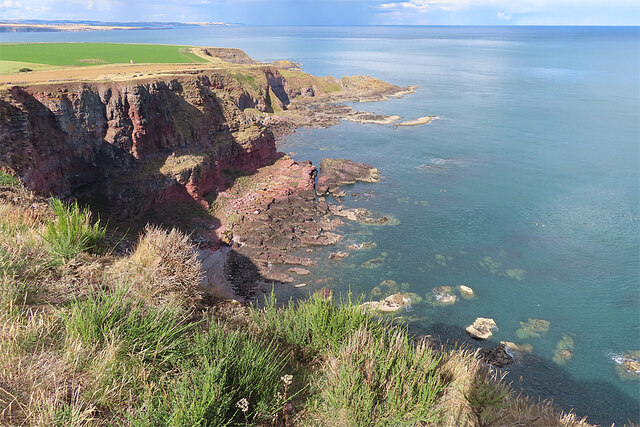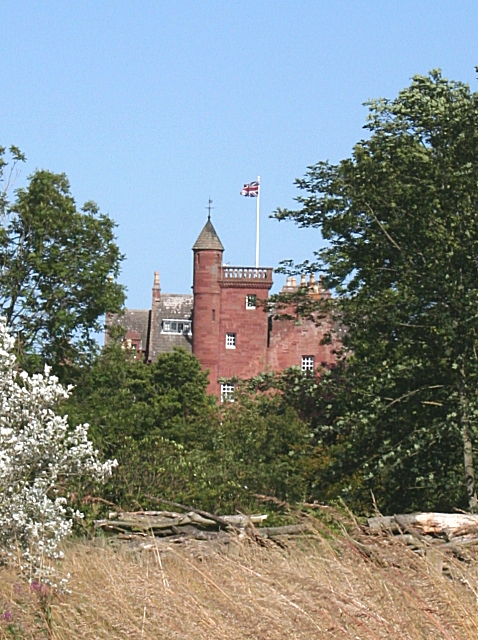Black Rock
Coastal Feature, Headland, Point in Angus
Scotland
Black Rock

Black Rock is a prominent coastal feature located in Angus, Scotland. This headland, also known as Black Rock Point, juts out into the North Sea and is characterized by its striking dark-colored cliffs. It is situated approximately 2 miles south of the town of Montrose and is a well-known landmark in the region.
Black Rock is composed mainly of sandstone and shale, resulting in its unique blackish appearance. The cliffs rise steeply from the sea, reaching heights of up to 30 meters in some areas. The continuous wave action of the North Sea has shaped these cliffs over time, creating fascinating rock formations and caves along the coastline.
The area around Black Rock offers breathtaking panoramic views of the sea and the surrounding coastline. On clear days, visitors can see as far as the North Sea horizon, with views extending to the nearby Montrose Basin and the hills of Aberdeenshire in the distance.
Black Rock is also notable for its rich biodiversity. The cliffs provide nesting sites for a variety of seabirds, including fulmars, kittiwakes, and guillemots. The surrounding waters are home to diverse marine life, with seals often seen basking on the rocks and dolphins occasionally spotted offshore.
Due to its natural beauty and ecological significance, Black Rock is a popular destination for nature enthusiasts, hikers, and birdwatchers. It offers opportunities for coastal walks, photography, and exploration of the rock formations and caves. The area is accessible by foot from Montrose, and there is parking available nearby for those who prefer to drive.
If you have any feedback on the listing, please let us know in the comments section below.
Black Rock Images
Images are sourced within 2km of 56.630375/-2.5008241 or Grid Reference NO6948. Thanks to Geograph Open Source API. All images are credited.





Black Rock is located at Grid Ref: NO6948 (Lat: 56.630375, Lng: -2.5008241)
Unitary Authority: Angus
Police Authority: Tayside
What 3 Words
///employ.ruffling.humans. Near Arbroath, Angus
Nearby Locations
Related Wikis
Ethie Castle
Ethie Castle is a 15,091 square feet (1,402.0 m2) 14th-century castle, situated around 3 miles north of the fishing town of Arbroath in Angus, Scotland...
Lunan Water
The Lunan Water is an easterly flowing river in Angus, Scotland, that discharges to the North Sea 11 kilometres (6.8 mi) north of the town of Arbroath...
Red Castle, Angus
Red Castle of Lunan is a ruined fortified house on the coast of Angus, Scotland. It is about 4 miles (6.4 km) south-southwest of Montrose. == History... ==
Inverkeilor railway station
Inverkeilor railway station served the village of Inverkeilor, Angus, Scotland from 1883 to 1930 on the North British, Arbroath and Montrose Railway....
Nearby Amenities
Located within 500m of 56.630375,-2.5008241Have you been to Black Rock?
Leave your review of Black Rock below (or comments, questions and feedback).














